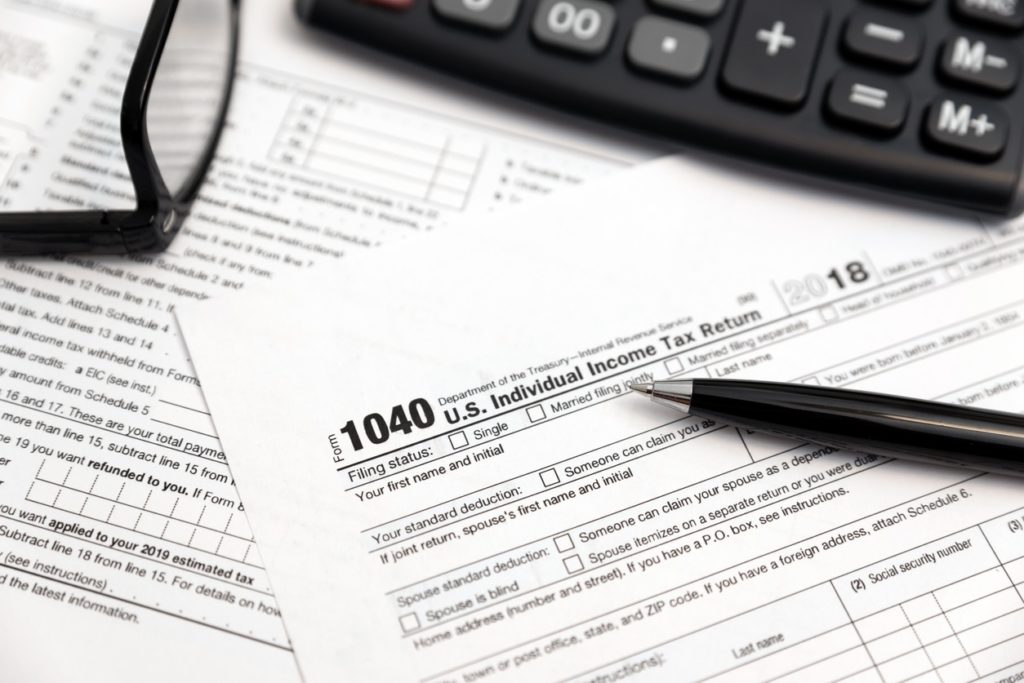Tax Laws Every Real Estate Investor Needs to Understand
Taxes are one of the biggest threats to a real estate investor’s profits. Luckily, investors have access to a whole spectrum of valuable tax deductions, and even strategies that can defer those taxes indefinitely. A savvy tax-reduction strategy can result in a five or even six figure reduction in your tax bill; that’s real money that stays in your pocket, or gets reinvested.
Let’s quickly review the different kinds of taxes that real estate investors pay, survey some of the most lucrative tax deductions for investors, and then touch on what’s arguably the most potent tax deferral strategy in the entire tax code.
Investor Taxes
Being a real estate investor is a lot different than being a simple property owner; investors get hit with three different kinds of taxes.
Property Taxes
Investment property taxes are calculated by taking the local tax rate and multiplying it by the investment property’s assessment. This assessment is determined by looking at the property’s “highest and best use,” which is generally the most profitable use of that property.
That’s within reason, of course— typically, the “highest and best use” has to be legally permissible (i.e. no deed or zoning restrictions that would prevent that use of the property), financially feasible, and physically possible.
Keep in mind that there are usually different tax rates for commercial properties and residential properties.
Real Estate Income Taxes
This is the big one. If you sell a property at a profit, you’ll owe capital gains taxes on that profit. There are two main capital gains tax rates; if you owned the property for less than a year, you pay the short-term rate, and if you owned it for longer than a year, you pay the long-term rate.
There is a way to defer those capital gains taxes, though, which we’ll go into in the third section.
The Three Ds
As you’ve probably figured out by now, real estate investors have to pay a significant amount of taxes. But just as the taxman taketh away, he also giveth. The “Three Ds” are the main tax reduction strategies available to investors: deductions, depreciation, and deferral. Having an excellent real estate lawyer can help you take advantage of these tax strategies.
Deductions
Investors can deduct all expenses stemming from their investment property. That includes:
Mortgage Interest
This is one of the biggest deductions for any homeowner, investor or not. Just note that this isn’t the same mortgage interest deduction that homeowners can take on their primary residence. Investors deducting mortgage interest on an investment property have to claim it as property expenses on Schedule E.
Property Taxes
Any state or local property taxes are deductible, as are occupancy taxes charged by your municipality.
Insurance
Most landlords will want to carry rental property insurance, which guards against damages or liability associated with tenants. These premiums, as well as premiums for fire, flood, or other insurance, are tax deductible.
Operating Expenses
This covers expenses like utilities, property management, and legal services.
Maintenance and Repairs
If you need to repair features like a leaky roof, broken HVAC unit, or faulty plumbing, you can deduct those repair expenses. You can also deduct the cost of routine maintenance like landscaping or pest control.
Keep in mind, though, that while you can deduct the cost of repairs and maintenance, you can’t deduct the cost of improvements. Fixing a leaky bathtub? Deductible. Adding an extra bathroom? Not deductible. That expense has to be added to your cost basis and depreciated, which we’ll cover below.
Depreciation
You can even deduct the cost of buying and improving an investment property— the only catch is, you can’t do it all at once with one massive deduction. The deduction is essentially divided up and spread out over the “useful life” of the property, allowing you to deduct a predetermined portion each year. That’s called depreciation.
The IRS has a few requirements for depreciation; you must own the property, you must use it in business or income-producing activity, it must have a determinable useful life, and it must be expected to last at least one year.
How do these requirements apply in real life? Well, if you sell the property within a year, you can’t take advantage of depreciation. And the “useful life” requirement means you can only depreciate something that decays, wears out, or gets used up— meaning you can’t depreciate the land itself, only the structure. That’s what the “cost basis” is; the value of your investment property, minus the land. Once you figure out the cost basis, you can figure out your depreciation.
For residential properties, depreciation is spread over 27.5 years. If you do the math, that comes to about 3.636% of the cost basis that you can deduct each year, for 27.5 years.
There is an asterisk here. When you sell the property, the IRS will seek to recapture some of that depreciation you deducted each year, since it was a big factor in how much you profited from the sale. Depreciation recapture is capped at 25%, is based on your ordinary income tax rate, and is only applied to the portion of the value gain that can be attributed to your past depreciation deductions.
Deferring Your Capital Gains Taxes
When you sell your investment property is when the IRS takes the biggest cut, primarily in the form of capital gains taxes. But there is a way to defer these taxes, potentially indefinitely.
The 1031 exchange allows you to sell your investment property, take the proceeds from that sale, and reinvest them in a subsequent property while deferring your capital gains taxes. The requirements for a 1031 are relatively generous; your subsequent property must be “like-kind” to your initial property, and the property swap must be completed within a 180 day timeframe. You also have 45 days from the sale of your initial property to identify potential replacement properties. As long as you meet these conditions, your tax obligations are deferred. Miss any of these deadlines, though, and you have to pay them in full.
One of the most advantageous aspects of the 1031 exchange is that you can use them over and over again, repeatedly trading up and expanding your holdings, while continuously deferring your capital gains. When you do sell, you’ll have to pay those capital gains taxes, but after enough trade-ups, your net worth will likely dwarf your accumulated tax bill.







